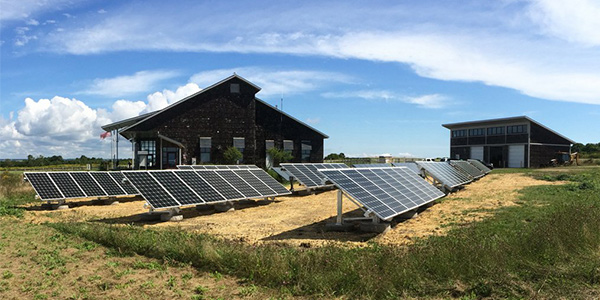The Rhode Island Public Utilities Commission last week unanimously rejected a proposal from National Grid to remove barriers for low-income customers to access the benefits of clean energy.
“At best, this is a poorly developed concept, and taken at its worst, it’s a gimmick and a thinly veiled attempt by the utility to increase their profits from the Renewable Energy Growth Program, while claiming to be doing it in the name of equity,” Commissioner Abigail Anthony said at a Feb. 18 PUC meeting.
National Grid proposed to expand on the state’s Community Remote Distributed Generation (CRDG) incentive program.
“Developers enrolled in the [existing] program get paid by ratepayers an amount that is up to 15% higher than the price needed to build a similarly sized solar facility without the CRDG special features,” PUC Chairman Ronald Gerwatowksi said during the meeting. The project owner would then enroll National Grid’s customers for that facility’s incentive and distributes the extra funds as a bill credit.

Solar facility in Middletown, R.I. | Newport Renewables
National Grid, according to its filing on the proposed program changes, found that low-income customers were underrepresented in the existing program. The utility proposed an increase in the existing rate enhancement by an additional 3 cents/kWh. To qualify for that adder, project owners would have had to subscribe at least 20% of the project’s capacity to low-income customers.
“The purpose of the proposed adder was to increase enrollment of low-income customers in CRDG solar projects in a manner similar to other states’ renewable energy programs,” a National Grid spokesperson told RTO Insider in an email. “The company is committed to addressing low-income customer issues in fulfilling its clean energy goals and will consider alternatives, as the commission recommends.”
Low-income customers enrolled in the proposed program would realize an average annual bill savings of $200, according to National Grid’s filing.
Gerwatowksi said that the intentions of the proposal were good, but the means for accomplishing its objectives “raised questions.”
“We have tens of thousands of customers struggling to pay their bills, and we’re going to be facing mountains of debt when the [pandemic-related] moratorium ends and efforts to increase affordability need to meet the scale of the problem,” Anthony said. “This proposal was a distraction from the work the company should be doing to identify and eliminate all of the inconsistencies in their programs and policies that are causing the electric system to cost more than it needs to.”
The commissioners said they were open to discussing ways to improve on the proposal.
“I think this proposal did identify an opportunity to deliver the benefits of enrolling low-income customers in CRDG but … in a way that doesn’t have added costs,” Anthony said.


